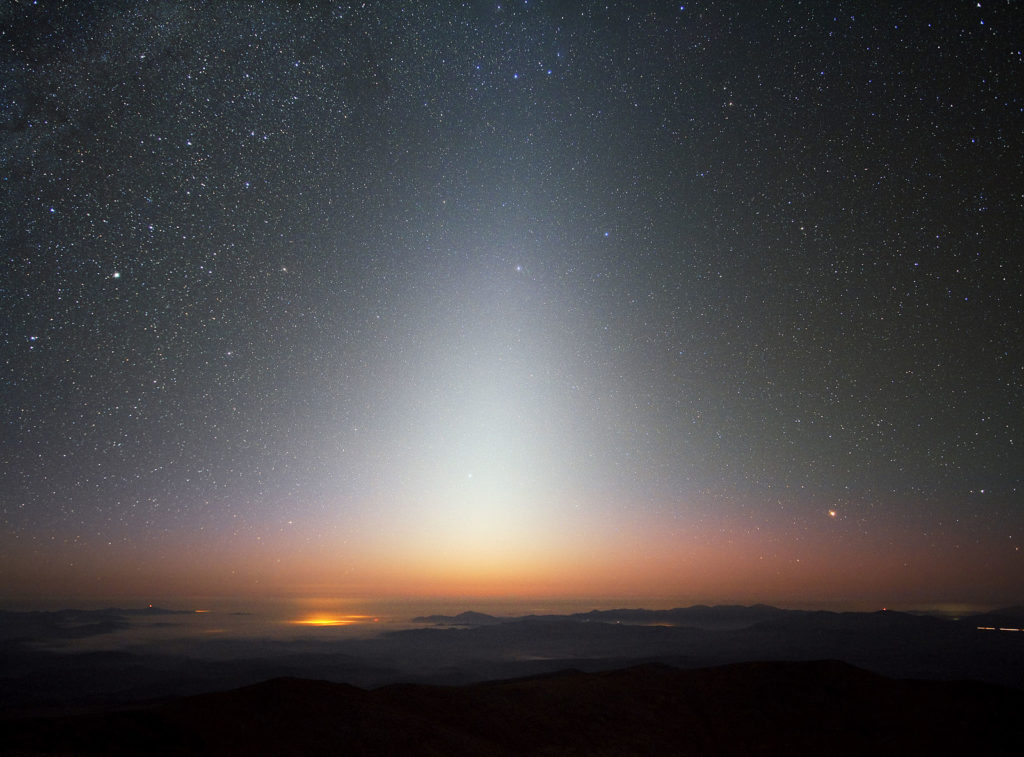
(Looking for last month’s ‘Night Sky’? Find it at this link…)
February gets underway with a respectable binocular comet still in the sky near the bowl of the Little Dipper not far from the north celestial pole. Some reports put Comet C/2022 E3 ZTF within reach of the unaided eye in dark sky, and in any case it’s worth the effort to spot this little iceball as it enters the solar system for the first time in 50,000 years. Elsewhere, planets abound in the western and southwestern sky with Venus, Jupiter, Mars, Uranus, and Neptune all making an appearance with the Moon nearby. Mercury makes its best morning apparition for the year for southern-hemisphere stargazers. And the zodiacal light returns in the evening sky for northern observers through the middle of February. Here’s what to see in the night sky this month…
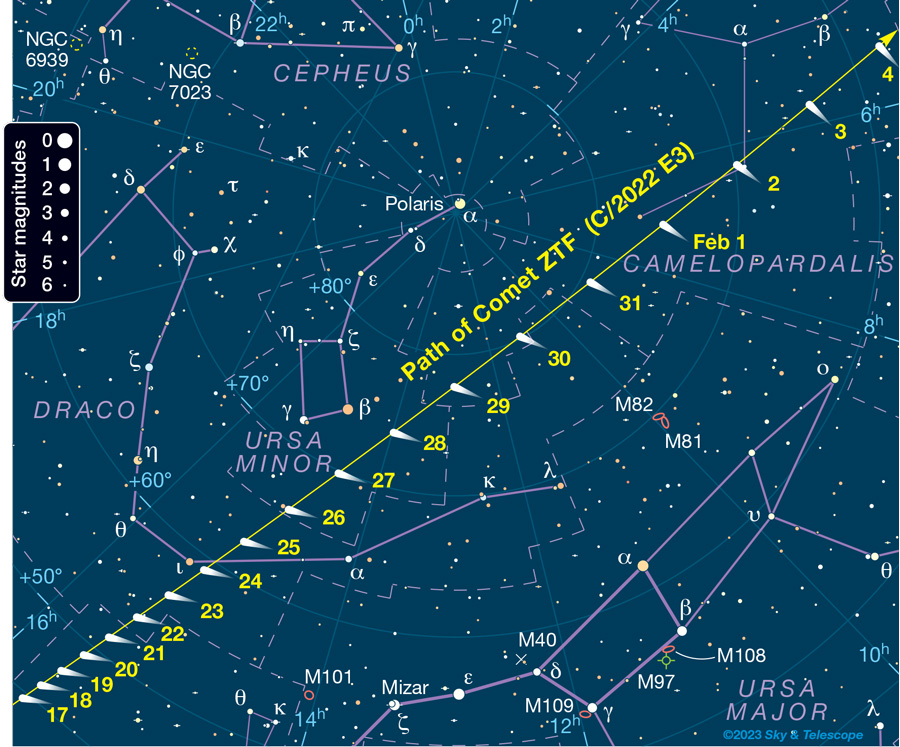
1 February 2023. Comet C/2022 E3 ZTF makes its closest approach to Earth at a distance of 0.28 astronomical units. (AU).
1-21 Feb. Southern-hemisphere observers can look for Mercury in the eastern early-morning sky. The planet shines between magnitude 0.0 and -0.5 all month and lies among the dim stars of Capricorn over the eastern horizon.
5 Feb. Full Moon, 18:29 UTC. This is the smallest full Moon of 2023 with a diameter about 7% smaller than average.
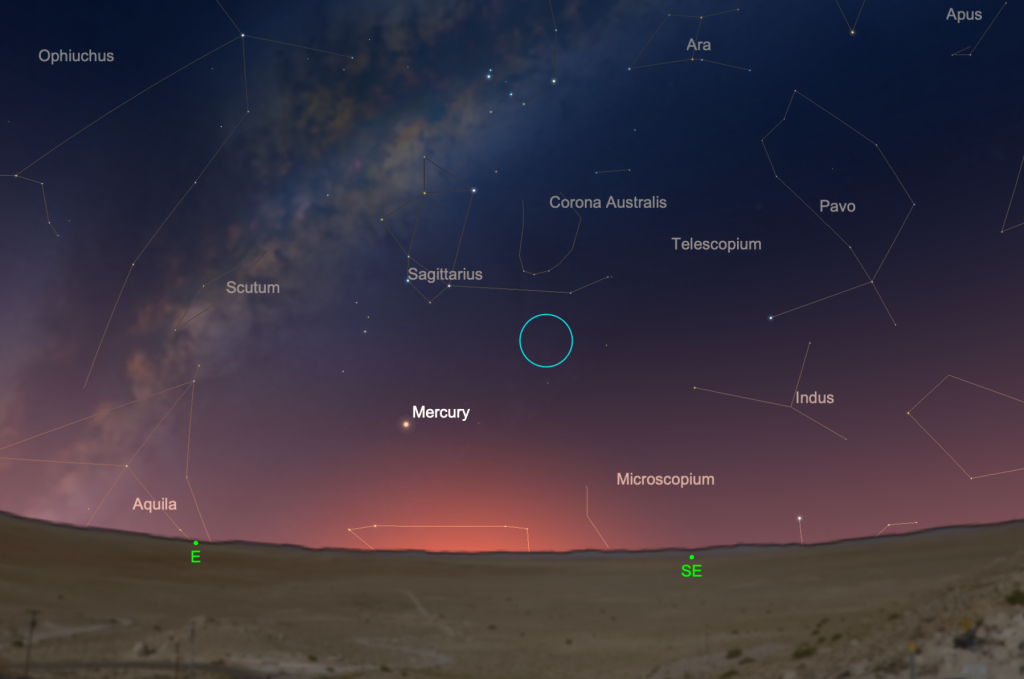
7-21 Feb. As the Moon moves out of the way in the evening sky, northern observers far from city lights can spot the zodiacal light in the western sky after sunset. This whitish wedge-shaped glow emerges at a steep angle to the western horizon this time of year. It’s caused by sunlight reflected by fine dust grains along the plane of the solar system. The zodiacal light is brightest closer to the Sun, so look for the zodiacal light about half hour after the end of evening twilight as it extends towards the constellation Taurus.
13 Feb. Last Quarter Moon, 16:01UTC
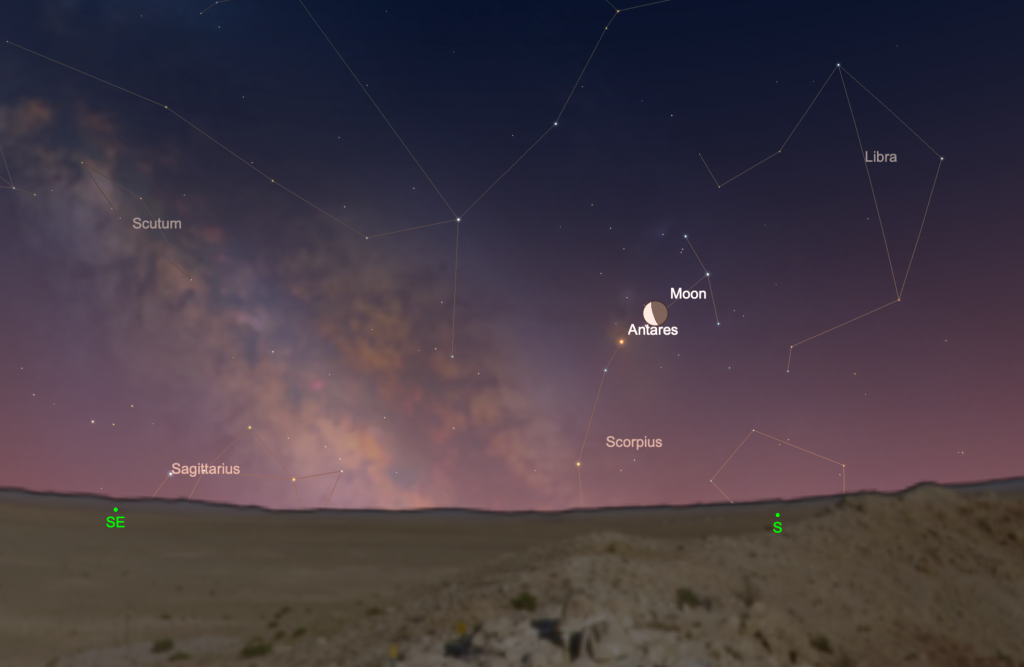
14 Feb. Look to the southeast as dawn arrives to spot the waning crescent Moon less than 2o north of red-orange Antares in Scorpius.
15 Feb. Venus and Neptune pass as close as 1/100 of a degree from each other. The precise separation is location dependent; North American observers see a slightly wider spacing of about 0.7 degrees as the planets appear after sunset. Venus lies west of Neptune, and it outshines the larger and more distant planet by almost 12 full magnitudes which, with lingering twilight, makes it a challenge to see both planets in a telescope. The disk of Venus spans about 11 arc-seconds while tiny Neptune is just 2.2 arc-seconds across. In the next several days, Venus pulls away from Neptune as the larger planet moves towards conjunction in March.
20 Feb. New Moon, 07:06 UTC
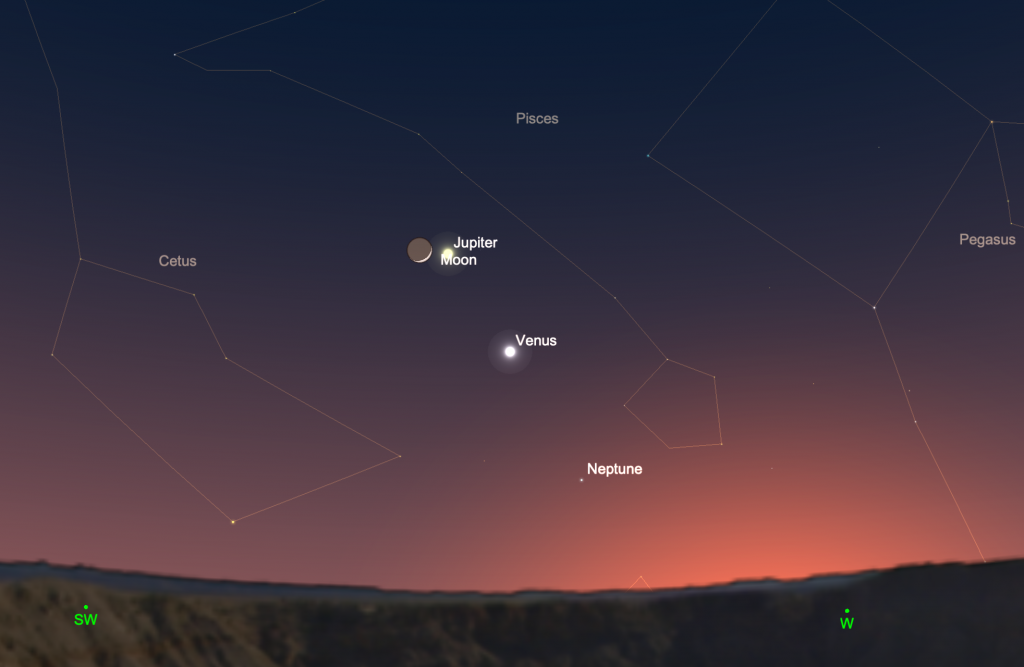
21-22 Feb. A slender crescent Moon passes near Venus and Jupiter in the west-southwestern sky after sunset. On Feb. 21 the Moon lies 5o below Venus; binoculars may help extract it from the twilight. On Feb. 22, a thicker Moon sits higher, about 2o southeast of Jupiter with brighter Venus some 7o to the west. This event presents a good photo opportunity as all three objects have a similar apparent brightness. Neptune lies about 2o north of the Moon on the 21st.
22 Feb. The crescent Moon passes about 1.2o north of Jupiter this evening in the southwestern sky. The big planet shines at magnitude -2.1 with a disk about 35” across. Much brighter Venus (magnitude -4.0) lies about 8o to the west with a disk 87% illuminated and 12” across.
25 Feb. Uranus sits about a degree south of the fat waxing crescent Moon in the southwest after sunset.
27 Feb. First Quarter Moon, 08:06 UTC.
27 Feb. Look for Mars just over a degree from the first-quarter Moon in Taurus. The planet has faded to magnitude +0.4 with a disk about 8” across, about half its maximum size at opposition in early December. It still slightly outshines Aldebaran and (very slightly) Betelgeuse.